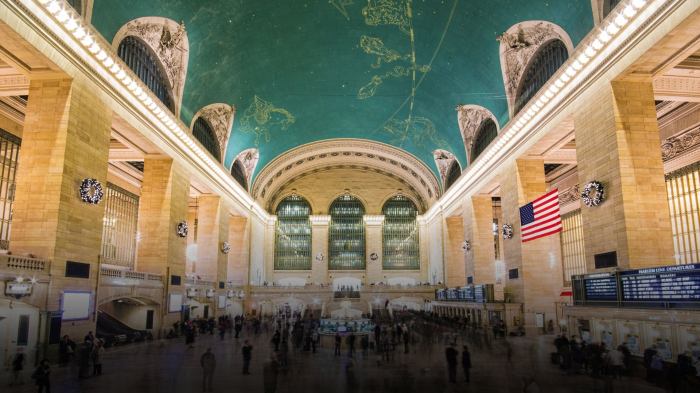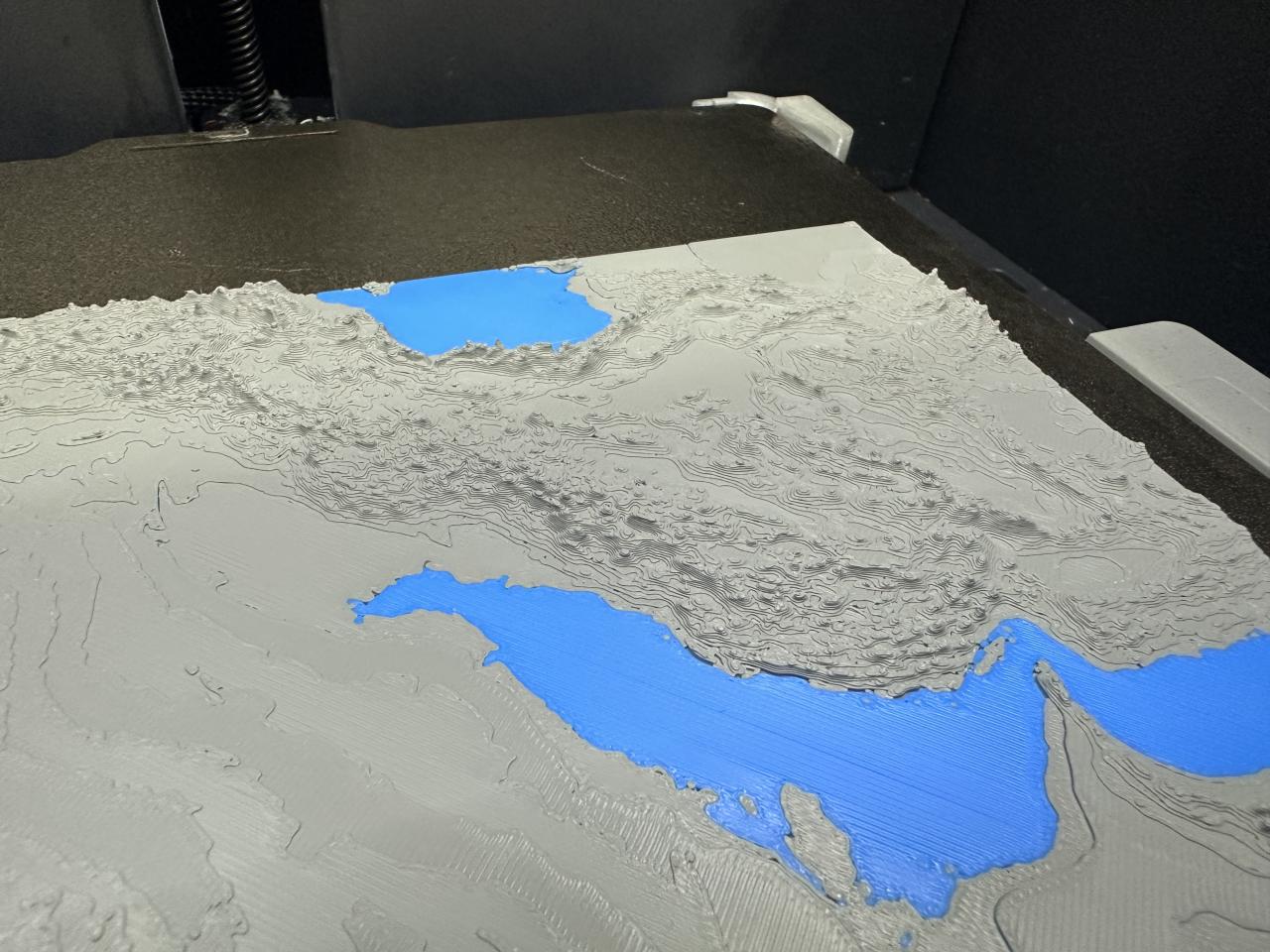Central Park NYC named no 1 tourist attraction in America! This iconic green space, a masterpiece of urban planning, has captivated millions for over a century. From its humble beginnings as a vision of Frederick Law Olmsted and Calvert Vaux to its current vibrant status as a global destination, Central Park’s story is one of transformation and enduring appeal.
This article delves into the park’s historical context, its significance as a tourist magnet, and the factors contributing to its top ranking.
The park’s design, blending natural landscapes with manicured gardens, paved the way for a unique urban oasis. This innovative approach continues to resonate with visitors, attracting a diverse range of demographics from families to couples to photographers. The park’s diverse activities, from picnics in the Bethesda Terrace to rollerblading on the Wollman Rink, contribute to its universal appeal.
Introduction to Central Park
Central Park, a sprawling oasis in the heart of Manhattan, stands as a testament to human ingenuity and the desire for urban green spaces. Its creation wasn’t simply an aesthetic choice; it was a response to the burgeoning population of New York City and a burgeoning awareness of the importance of public spaces for leisure and recreation. The park’s story is one of ambition, collaboration, and a profound impact on the city’s character.From a largely undeveloped landscape to a meticulously designed urban park, Central Park’s evolution reflects the changing needs and aspirations of the city.
Its transformation significantly shaped New York’s identity and continues to serve as a beloved destination for millions today.
Early Planning and Development
The idea of a central park emerged from the growing recognition that New York needed a respite from its burgeoning urban sprawl. The early 19th century saw a growing awareness of the importance of public spaces for recreation and well-being. Frederick Law Olmsted and Calvert Vaux, two prominent landscape architects, won the competition to design the park. Their vision, grounded in the principles of naturalism and aesthetic harmony, set the stage for a park that would be unlike anything seen before.
The meticulous planning phase involved surveys, land acquisitions, and the development of a master plan that meticulously detailed the park’s features. Significant engineering challenges, including the construction of bridges, tunnels, and reservoirs, had to be overcome to transform the rough terrain into the park we know today. The initial public response to the park was a mixture of enthusiasm and skepticism.
Key Figures and Events
The development of Central Park was a collaborative effort involving many key figures. Frederick Law Olmsted, the chief landscape architect, envisioned a park that blended natural beauty with human-made elements, emphasizing the integration of nature within the urban context. Calvert Vaux, his collaborator, played a crucial role in the architectural designs and the overall structural planning. The political and financial hurdles of acquiring the land and securing funding were significant.
New York City’s political landscape and the complexities of land ownership were pivotal in shaping the park’s development.
Initial Public Reaction
The initial public response to Central Park was complex. Some saw the project as a grand experiment, an audacious attempt to transform the city’s landscape. Others questioned the practicality and expense of such a large-scale undertaking. There were concerns about the park’s potential impact on property values in the surrounding neighborhoods. The park’s early years also faced challenges in terms of maintenance and public use, which required constant adaptation and adjustments to its design.
Central Park’s Vision vs. Current State
| Aspect | Initial Vision (Olmsted & Vaux) | Current State |
|---|---|---|
| Purpose | Recreation, escape from urban life, preservation of natural elements. | Recreation, cultural events, artistic expression, and preservation of natural elements. |
| Design | A landscape blending natural elements and structured pathways. | A diverse landscape with extensive gardens, playgrounds, and recreational areas. |
| Accessibility | Provision for public use and enjoyment. | Extensive and easily accessible public spaces and facilities. |
| Challenges | Land acquisition, financing, and overcoming engineering hurdles. | Ongoing maintenance, preserving historical features, and managing visitor traffic. |
The table above highlights the remarkable continuity and evolution of Central Park’s purpose and design. The initial vision has been remarkably realized and adapted to meet the evolving needs of New York City, with the park’s design continually refined to enhance its functionality and beauty.
Central Park being named the top tourist attraction in America is no surprise! It’s a truly iconic space. But if you’re looking for a luxurious getaway, check out the new Soho House, their first Caribbean property on Canouan. Hotels, resorts, and beach hotels like this one are a perfect complement to the city’s bustling energy.
Still, Central Park’s enduring appeal remains undeniable.
Central Park’s Significance as a Tourist Destination
Central Park, a sprawling green oasis in the heart of Manhattan, has become a global icon, attracting millions of visitors annually. Its unique blend of natural beauty, recreational opportunities, and cultural significance makes it a must-see destination for tourists from all corners of the world. This enduring appeal stems from the park’s ability to satisfy a wide range of interests, from families seeking outdoor fun to history buffs exploring its rich past.Central Park’s allure extends beyond its aesthetic appeal.
Its strategic location in the bustling city, coupled with its diverse offerings, positions it as a crucial part of the New York City tourist experience. The park’s sheer size and variety of attractions, from the iconic Bethesda Terrace to the serene Bow Bridge, cater to different tastes and ages, making it a truly universal draw.
Activities and Attractions that Draw Tourists
Central Park’s diverse landscape and myriad attractions are key to its popularity. From the iconic Strawberry Fields to the meticulously maintained playgrounds, the park offers a range of experiences that cater to every interest. The numerous themed gardens, including the Japanese Garden and the Ramble, provide tranquil escapes from the city’s energy. The park’s extensive network of paths and walkways also encourage exploration and discovery, making it a perfect destination for leisurely strolls or brisk walks.
Cultural and Historical Significance
Central Park’s creation in the mid-19th century was a groundbreaking endeavor, demonstrating the city’s commitment to public spaces and urban planning. The park’s design, influenced by various European landscape styles, incorporated elements of natural beauty with carefully planned walkways and monuments. This unique blend of nature and design reflected the burgeoning aesthetic sensibilities of the era. This legacy is still palpable today, as the park continues to serve as a powerful symbol of New York’s historical development and commitment to public well-being.
Central Park being named the #1 tourist attraction in America is awesome! To capture all those amazing NYC memories, you’ll need a top-notch phone case to protect your precious camera phone. Luckily, finding the best protective phone cases is easier than ever. Check out this list of the top picks for ultimate protection best protective phone cases to ensure your photos of Central Park’s beauty are safe and sound for years to come! It’s a win-win, a must-have for any NYC visitor.
Visitor Demographics and Motivations
| Demographic Group | Reasons for Visiting |
|---|---|
| Families with Children | Enjoyment of playgrounds, zoo, and other kid-friendly attractions. |
| Couples | Romantic strolls, picnics, and enjoying the serene atmosphere. |
| Solo Travelers | Opportunities for relaxation, reflection, and solo exploration of the park’s diverse offerings. |
| History Buffs | Visiting historical sites, monuments, and exploring the park’s rich past. |
| Photographers | Capturing stunning images of the park’s architecture, scenery, and diverse cultural elements. |
| Nature Enthusiasts | Exploring the natural beauty, including gardens, walking paths, and wildlife. |
This table illustrates the broad appeal of Central Park, demonstrating that it satisfies a wide range of interests and needs. The diverse reasons for visiting underscore the park’s importance as a multifaceted destination, rather than just a picturesque space.
Factors Contributing to Central Park’s Top Ranking
Central Park’s unparalleled status as the number one tourist attraction in America stems from a confluence of factors, transcending simple aesthetics. Its enduring appeal lies in a carefully crafted blend of natural beauty, meticulously maintained infrastructure, and a unique ability to cater to diverse visitor needs. This combination has resulted in a consistently high visitor count, making it a globally recognized icon.Central Park’s enduring popularity is a testament to its versatility.
It’s not just a park; it’s a multifaceted experience accommodating diverse interests, from leisurely strolls to intense athletic pursuits. This multifaceted appeal is a key factor in its enduring popularity.
Unique Features and Amenities
Central Park boasts a remarkable collection of features and amenities that cater to a wide spectrum of interests. These attractions, ranging from iconic landmarks to recreational opportunities, contribute significantly to the park’s appeal. These features make it more than just a place to visit; it becomes an immersive experience.
- The Bethesda Terrace and Fountain, with its serene atmosphere and picturesque views, epitomizes the park’s aesthetic appeal. The meticulously maintained gardens, fountains, and sculptures further enhance the experience, drawing visitors to admire the artistry and beauty.
- The vast expanse of the park provides ample space for diverse activities, from picnicking and relaxing in the meadows to playing sports in designated areas. This variety allows visitors to tailor their experience to their preferences, whether they seek quiet contemplation or lively recreation.
- The extensive network of paths and walkways makes navigation seamless and enjoyable. This meticulous design allows for easy access to all parts of the park, ensuring visitors can explore its diverse landscapes without getting lost or overwhelmed.
Accessibility and Convenience
Central Park’s strategic location and efficient infrastructure make it exceptionally accessible and convenient for tourists. This ease of access is a crucial element in attracting visitors from all over the world.
- Central Park’s central location in Manhattan places it within easy reach of hotels, transportation hubs, and other tourist attractions. This strategic positioning facilitates seamless integration into a broader sightseeing itinerary.
- The park’s extensive network of roadways and pedestrian paths ensures that all areas are easily accessible, regardless of visitor’s mobility needs. This meticulous planning ensures that everyone can enjoy the park’s amenities and attractions.
- The availability of public transportation, including subway stations, makes it convenient for visitors to reach and explore the park without relying solely on taxis or personal vehicles. This ease of access enhances the overall visitor experience.
Broad Appeal to Diverse Audiences
Central Park’s appeal transcends age, cultural background, and individual interests. Its diverse attractions and facilities cater to a wide range of preferences.
Central Park being named America’s top tourist attraction is no surprise. It’s a fantastic green space in the heart of NYC, and rightfully deserves the title. Planning a trip to explore the city? Consider booking a flight with los angeles athens norse atlantic airways for a smooth journey, and then spend a few days soaking up the beauty of Central Park, a true NYC gem.
It’s a must-see, regardless of your travel plans.
- The park’s diverse landscape, including expansive lawns, serene lakes, and wooded areas, caters to various preferences, offering something for everyone. The varied settings provide opportunities for quiet contemplation, active recreation, or family gatherings.
- The variety of activities and events, such as concerts, festivals, and sporting events, makes Central Park a dynamic and engaging destination throughout the year. This calendar of events ensures that the park continues to be a vibrant hub of activity.
- The park’s inclusion of playgrounds, children’s attractions, and family-friendly activities makes it an ideal destination for families with children. The thoughtful consideration of children’s needs contributes significantly to the park’s broad appeal.
Strong Points and How They Appeal to a Broad Audience
Central Park’s success is due to a carefully crafted combination of design elements, amenities, and strategic location.
- The meticulous maintenance of the park’s infrastructure, landscaping, and facilities ensures that it remains a pristine and enjoyable space for all visitors. This consistent maintenance is a key element in the park’s enduring appeal.
- The park’s numerous green spaces and recreational areas cater to the needs of visitors seeking relaxation, exercise, and social interaction. This range of activities allows visitors to engage with the park in various ways, enriching their experience.
- The integration of historical elements and cultural attractions, like the Strawberry Fields, further enhances the park’s appeal, providing visitors with a glimpse into the city’s rich history and cultural heritage. This rich history contributes significantly to the park’s allure.
Comparing Central Park to Other Top American Attractions

Central Park’s unparalleled popularity as America’s number one tourist attraction begs the question: what sets it apart from other iconic destinations? While many destinations boast stunning scenery or historical significance, Central Park’s unique blend of natural beauty, urban design, and recreational opportunities makes it a truly exceptional destination. This comparison delves into the factors that contribute to Central Park’s distinctive appeal and explores common threads among top American attractions.Beyond the sheer number of visitors, successful tourist destinations often share common characteristics, such as easily accessible infrastructure, diverse offerings catering to various interests, and strong branding.
These attributes create a positive and memorable experience for tourists, ultimately driving repeat visits and word-of-mouth recommendations. Understanding these elements is crucial for evaluating Central Park’s position among its competitors.
Distinguishing Factors of Central Park, Central park nyc named no 1 tourist attraction in america
Central Park’s enduring appeal stems from its ability to seamlessly integrate nature within an urban environment. Unlike purely natural or historical sites, Central Park offers a unique experience: a place for recreation, contemplation, and social interaction, all within a meticulously designed urban space. Its diverse landscapes, from expansive meadows to tranquil lakes, offer a stark contrast to the surrounding cityscape, creating a powerful sense of escape and rejuvenation.
Common Themes in Top American Attractions
Many of the top American attractions, including national parks, historical landmarks, and museums, often share common themes. These destinations tend to possess a strong narrative, whether historical, cultural, or natural, that resonates with visitors. They also usually offer a variety of experiences, catering to different interests and demographics, from educational tours to immersive entertainment. Furthermore, efficient infrastructure, clear signage, and well-maintained facilities contribute significantly to a positive visitor experience.
Successful Tourist Strategies of Similar Locations
Numerous top attractions employ successful strategies to enhance visitor engagement. For example, the National Parks system emphasizes conservation and education, ensuring that natural beauty is preserved for future generations while providing educational opportunities for visitors. Museums, on the other hand, often use interactive exhibits and educational programs to connect visitors with the artifacts and stories they display. These strategies focus on providing value beyond simply sightseeing, fostering a deeper appreciation for the destination.
Comparing Central Park to Another Top Attraction: The Grand Canyon
| Feature | Central Park | Grand Canyon National Park |
|---|---|---|
| Primary Attraction | Urban oasis, recreational spaces, and natural beauty within a city. | Vast natural wonder, geological formations, and awe-inspiring landscapes. |
| Target Audience | Families, couples, individuals seeking relaxation and recreation, and tourists of various ages. | Adventurous tourists, photographers, and those interested in geology and natural history. |
| Visitor Experience | Diverse activities like walking, boating, picnics, and cultural events. | Hiking, sightseeing, exploring various viewpoints, and learning about the canyon’s history. |
| Infrastructure | Well-developed network of paths, playgrounds, and recreational facilities. | Extensive network of trails and visitor centers catering to various levels of experience. |
| Economic Impact | Significant economic impact through tourism, supporting local businesses and services. | Major economic impact through tourism and support for local businesses within the park’s surroundings. |
Central Park’s Impact on the City of New York
Central Park, a sprawling oasis in the heart of New York City, has far-reaching effects beyond its scenic beauty. Its presence significantly influences the city’s economy, image, and social fabric, creating a vibrant and interconnected urban ecosystem. This impact is not limited to immediate surroundings but extends throughout the metropolis, creating a positive feedback loop that benefits the entire city.The park’s multifaceted role in shaping New York City’s identity is undeniable, making it a cornerstone of the city’s character and a testament to the power of urban planning.
This impact goes beyond the realm of aesthetics, deeply intertwining with the economic, social, and cultural aspects of the city.
Economic Benefits
Central Park generates substantial revenue for New York City. Tourism, a major contributor to the city’s economy, relies heavily on the park’s attractions. Millions of visitors annually flock to Central Park, spending money on food, lodging, transportation, and souvenirs, thereby boosting local businesses. This direct impact also extends to indirect benefits, as businesses reliant on tourism thrive due to the park’s popularity.
Enhancing the City’s Image and Reputation
Central Park plays a crucial role in projecting a positive image of New York City to the world. Its pristine beauty, tranquil atmosphere, and iconic landmarks contribute significantly to the city’s global brand. This positive perception attracts tourists, investors, and skilled professionals, ultimately enhancing the city’s reputation as a vibrant, culturally rich, and aesthetically pleasing destination. Furthermore, the park’s upkeep and maintenance contribute to a positive perception of urban planning and environmental consciousness.
Social and Cultural Impact on Surrounding Communities
Central Park serves as a vital social and cultural hub for the surrounding communities. It provides a space for recreation, relaxation, and community engagement. Numerous activities, from picnics and concerts to organized sports and cultural events, take place in the park, fostering a sense of community and shared experience. These interactions contribute to a more cohesive and vibrant social environment, especially in areas that may have previously lacked such public spaces.
Examples of Community Initiatives Related to Central Park
Numerous community organizations actively participate in initiatives related to Central Park. These initiatives demonstrate a strong commitment to preserving and enhancing the park’s value to the city. One example includes volunteer groups that actively participate in park maintenance, cleaning, and restoration projects. Furthermore, educational programs and workshops related to environmental awareness and park preservation are frequently organized, demonstrating the deep connection between the community and the park.
Future of Central Park as a Tourist Attraction
Central Park, a globally renowned oasis, faces the constant challenge of maintaining its appeal while adapting to evolving tourist expectations. Its future success hinges on understanding and addressing the needs of modern visitors, while preserving its historic charm and unique character. Balancing the demands of a growing tourism industry with the need for environmental sustainability and equitable access is crucial for Central Park’s continued success.To ensure its enduring appeal, the park needs to embrace innovation while remaining true to its core values.
This involves recognizing emerging trends in tourism and creating experiences that cater to diverse interests and demographics. The following sections detail potential changes and improvements to further enhance Central Park’s allure and position it as a leader in urban green spaces.
Potential Changes and Improvements
Central Park’s continued success relies on proactive adaptation to evolving visitor preferences. This necessitates the introduction of innovative experiences, facilities, and programs that attract new visitors and enhance the enjoyment of returning guests. Modernizing infrastructure while preserving historical elements is a key balance. Improving accessibility for all visitors, including those with disabilities, is a critical component of creating an inclusive and enjoyable experience for everyone.
New Attractions, Facilities, or Programs
Offering fresh and engaging experiences will help keep Central Park at the forefront of NYC’s tourist attractions. This involves creating opportunities for interactive learning, artistic expression, and exploration. Implementing innovative technologies, such as augmented reality tours or interactive maps, could enhance the visitor experience and foster a deeper understanding of the park’s history and ecology.
- Interactive Historical Exhibits: These exhibits could showcase the park’s evolution, from its initial design to its current state. Interactive displays, augmented reality elements, and multimedia presentations could engage visitors and provide a dynamic learning experience. Think of interactive touchscreens that allow users to zoom in on historical maps, see photographs of the park at different eras, or listen to recorded interviews with park designers and historians.
- Sustainable Living Demonstrations: The park could host demonstrations of sustainable practices, such as composting, rainwater harvesting, and urban gardening. These interactive displays could educate visitors about environmental responsibility and encourage them to adopt eco-friendly habits. This could be combined with workshops, classes, and educational resources, further promoting environmental awareness.
- Immersive Art Installations: Commissioning contemporary art installations throughout the park could provide fresh perspectives and create engaging photo opportunities. These could be interactive, responsive to the environment, or offer opportunities for visitor participation, creating unique and memorable experiences.
Emerging Trends and Challenges
The tourism industry is constantly evolving, and Central Park must adapt to these changes to maintain its standing as a top destination. Growing interest in sustainable tourism, wellness activities, and experiential travel will be crucial. Balancing the needs of a growing number of visitors with the need to protect the park’s natural beauty and tranquility is a significant challenge.
- Sustainability Concerns: Increasing visitor numbers necessitate careful management of resource use. Implementing sustainable practices, such as water conservation measures and waste reduction programs, is essential to minimize the park’s environmental impact.
- Crowds and Congestion: Managing large crowds during peak seasons is a recurring issue. Strategies for traffic management, visitor flow optimization, and alternative access points will be essential for visitor comfort and park preservation.
- Maintaining Historical Character: Preserving the park’s historical character while embracing modernization is a delicate balance. Careful planning and consultation with historical preservation experts are crucial.
Potential New Visitor Experiences
Developing unique experiences that cater to a wider range of interests and demographics is vital for Central Park’s future.
- “Central Park Soundscape” Audio Tour: This tour would use audio guides and ambient sound recordings to highlight the park’s diverse soundscapes. Visitors could explore the park through the sounds of birds, the murmur of the water, and the rustling of leaves, providing a unique auditory experience. This tour could also include sounds of historical events or musical performances associated with the park.
- “Urban Nature Retreat” Guided Meditation Walks: These guided meditation walks would combine mindfulness practices with nature exploration. Expert guides would lead visitors on paths through the park, focusing on breathing exercises, mindful observation of nature, and fostering inner peace.
- “Central Park Culinary Adventures”: This program would highlight the park’s diverse culinary offerings, with guided tours to explore local farmers’ markets, seasonal food vendors, and pop-up dining experiences in the park. This experience would combine culinary exploration with the park’s natural beauty.
Visual Representation of Central Park: Central Park Nyc Named No 1 Tourist Attraction In America

Central Park’s allure extends far beyond its meticulously crafted landscapes; its visual appeal is a significant contributor to its iconic status. The park’s diverse features, from serene lakes to bustling plazas, offer a captivating panorama that draws millions annually. Its visual representation, whether through photographs or artistic renderings, embodies the park’s essence – a vibrant tapestry of nature and urban design.The visual richness of Central Park is crucial for understanding its cultural and historical significance.
The park’s visual identity reflects the careful balance between natural elements and human intervention, a unique characteristic that sets it apart. Images evoke the park’s tranquility and energy, showcasing its accessibility and beauty to a global audience.
Iconic Landmarks and Features
Central Park boasts a multitude of iconic landmarks and features that contribute to its visual appeal. From the grandeur of the Bethesda Terrace to the playful ambiance of the Ramble, each element tells a story. The meticulously maintained lawns, the towering trees, and the winding paths are all part of the park’s captivating visual narrative. These features, when captured in photographs, truly illustrate the park’s charm and artistry.
Visual Representation of Landscapes and Attractions
| Landscape/Attraction | Illustration Description |
|---|---|
| The Mall | A wide, grassy expanse, lined with majestic trees, ideal for leisurely strolls and picnics. The smooth, manicured lawn is highlighted by the architectural grandeur of the surrounding buildings and monuments. |
| The Lake | A serene body of water, often reflecting the surrounding trees and sky. Small boats might be seen on the surface, adding a touch of tranquility and activity. The water’s surface appears still and glassy, mirroring the surrounding foliage. |
| The Ramble | A naturalistic area featuring dense foliage and winding pathways. The ground is covered with diverse plant life, creating a sense of seclusion and discovery. The uneven terrain and natural contours contribute to the park’s overall visual appeal. |
| The Bethesda Terrace | A picturesque architectural structure, typically situated near a pond or fountain. The elegant design of the terrace, with its intricate details, and the surrounding greenery, creates a serene and inviting atmosphere. |
| The Bow Bridge | A classic, iconic arched bridge, often situated over a tranquil body of water. The bridge’s design is visually appealing, and the surrounding scenery adds depth and charm. The bridge’s reflection in the water is often a key component of the visual representation. |
Sample Photographs
A variety of photographs can effectively showcase Central Park’s visual appeal.
- A photograph of the Bethesda Terrace, capturing its intricate architectural details and the serene ambiance of the surrounding environment. The image should highlight the interplay of light and shadow, emphasizing the delicate carvings and the overall harmony of the scene.
- A picture of the Bow Bridge, showcasing its graceful arch against the backdrop of the surrounding park. The reflection of the bridge in the water should be clear, and the image should convey a sense of peace and tranquility.
- A panoramic shot of the Central Park Lake, featuring the iconic Bethesda Terrace in the background. The image should capture the vastness of the lake, the greenery of the surrounding trees, and the architectural beauty of the terrace, creating a sense of grandeur.
- A close-up of a section of the Ramble, with its dense foliage and winding paths. The image should emphasize the natural beauty and seclusion of the area, highlighting the textures and colors of the plants and the overall sense of peace.
- A photograph of the iconic Central Park carousel, capturing the vibrant colors and playful atmosphere. The carousel should be in focus, with the surrounding park as a gentle backdrop, evoking a sense of joy and nostalgia.
Visual Atmosphere
Central Park’s atmosphere is a crucial aspect of its visual representation. The interplay of light and shadow, the color palette of the trees and flowers, and the overall feeling of space are all elements that contribute to a distinct visual narrative. A photograph depicting a scene with a soft morning light, casting a warm glow over the park’s trees and pathways, would evoke a sense of tranquility.
Conversely, a vibrant sunset scene over the lake could convey a sense of energy and excitement. The overall visual representation aims to encapsulate the park’s capacity to evoke diverse emotions and experiences.
Closing Summary
Central Park’s rise to the top spot as America’s premier tourist attraction is a testament to its enduring charm and adaptability. Its historical significance, coupled with its vibrant cultural and social impact on New York City, makes it a truly special place. The park’s future prospects look bright, with potential for innovative programs and attractions to keep it relevant and engaging for generations to come.









